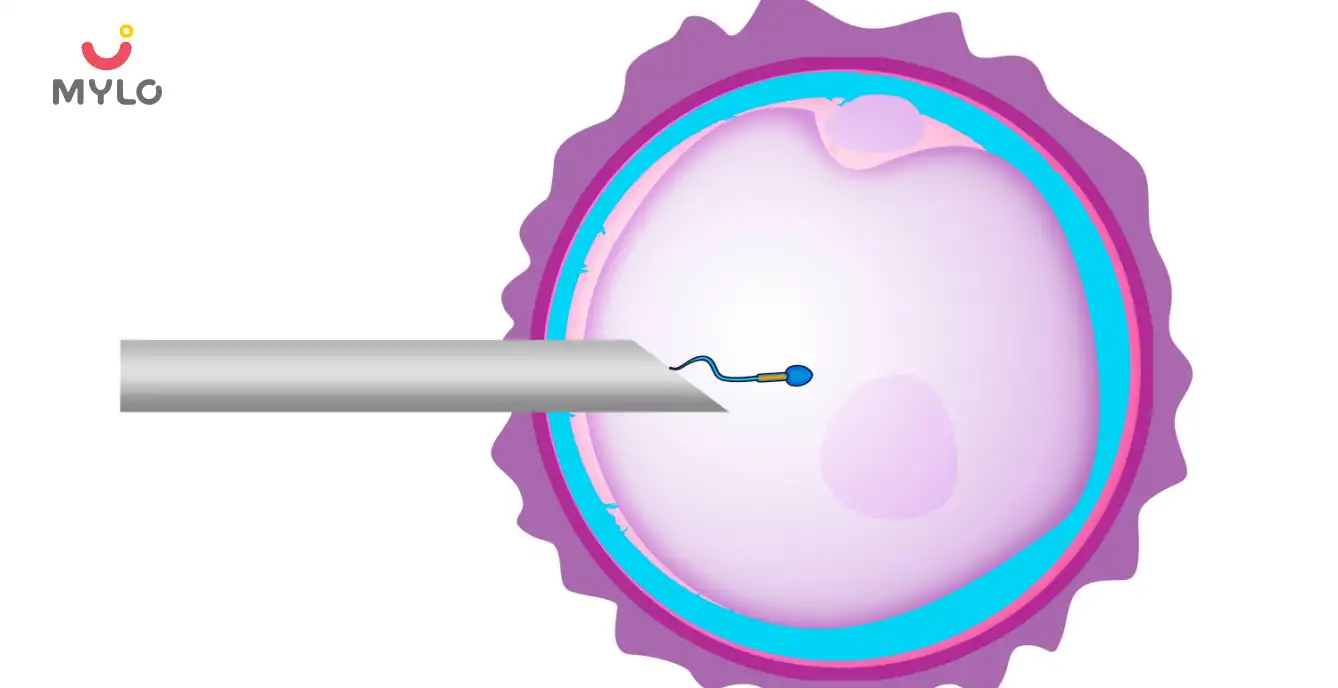Home

Breastfeeding & Lactation

How to Tell if Baby Is Still Hungry After Breastfeeding
In this Article

Breastfeeding & Lactation
How to Tell if Baby Is Still Hungry After Breastfeeding
Updated on 14 July 2023
The baby keeps on crying even after breastfeeding for a sufficient time. Is my baby hungry again, or was he/she not full after the breastfeeding session? How to tell if baby is still hungry after breastfeeding? I wish there was a complete guide to tell me when my munchkin is hungry, says Seema (Mother of 1-month-old baby). Most new parents are constantly thinking about these challenges when new to the business.
Wish granted: presenting a complete guide to understand questions like how do I know my baby is full when breastfeeding and initiating a stress-free parenthood journey.
Understanding Baby's Hunger Cues
With experience and perseverance, you can understand baby cues. Until then, a general guideline can help parents identify whether their baby is hungry or just looking for a warm cuddle and want to nap. If you are still wondering about how to know baby stomach is full, then check the below list:
Early Signs (I am Hungry)
-
Smacking or licking lips.
-
Open and close their mouth frequently.
-
Sucking fingers, lips, tongue, toes, toys, or clothes.
Active Signs (I am very Hungry)
-
Going close to the chest of the person carrying them.
-
Trying to take a position for nursing by lying back or pulling the mother's clothes.
-
Fidgeting around a lot.
-
Hitting on your arm or chest.
-
Fussy and breathing fast.
Late Signs (Calm me before feeding)
-
Moving head frantically before feeding
-
Crying
You may like : Lactation Failure: A Comprehensive Guide to Understanding the Causes and Solutions
How Do I Know My Baby is Full When Breastfeeding?
Here are some key points to help you determine if your baby is full when breastfeeding:
1. Content Behavior
A satisfied baby will release the breast independently and display signs of relaxation or sleepiness.
2. Active Feeding
G If your baby is actively nursing, with vigorous sucking and rhythmic swallowing, it indicates they are taking in milk and satisfying their hunger.
3. Decreased Sucking Intensity
As the feeding progresses, you may notice a decrease in the intensity of your baby's sucking, suggesting that their hunger is satisfied.
4. Feeding Duration and Frequency
Longer and more frequent nursing sessions may indicate that your baby is still hungry, while consistent and predictable feeding patterns suggest they are getting enough nourishment.
5. Weight Gain and Growth
Regular visits to the pediatrician will help monitor your baby's weight gain and overall growth, which can indicate their feeding adequacy.
6. Trust Your Instincts
Every baby is unique, so trust your parental instincts and observe your baby's cues. Consult a lactation consultant or healthcare provider for guidance if you have concerns.
10 Signs that Your Baby is Still Hungry After Breastfeeding
Here are 10 signs on how to tell if baby is still hungry after breastfeeding:
1. Rooting Reflex
Your baby may continue to turn their head and search for the breast, indicating they seek more nourishment.
2. Hand-to-Mouth Movements
If your baby brings their hands to their mouth and sucks or chews on them, it can be a sign of lingering hunger.
3. Lip Smacking
Your baby may smack their lips or make sucking motions, signaling a desire for more milk.
4. Crying or Fussiness
Persistent crying or fussiness after breastfeeding can indicate that your baby is still hungry and looking for more nourishment.
5. Short Feeding Duration
If your baby consistently has short nursing sessions and seems unsatisfied, it may suggest they need additional feeding.
6. Incomplete Swallowing
If your baby frequently breaks suction and releases the breast without swallowing much milk, it could mean they are still hungry.
7.Cluster Feeding
Cluster feeding, where your baby wants to nurse frequently within a short period, can indicate increased hunger.
8. Insatiable Sucking
Your baby may continue to suck on their hands, fingers, or pacifier even after a breastfeeding session, indicating a persistent appetite.
9. Poor Weight Gain
If your baby is not gaining weight adequately or their growth rate is slower than expected, it could indicate insufficient feeding.
10. Restlessness or Disrupted Sleep
If your baby has difficulty settling down, experiences disrupted sleep or wakes up frequently, it might be due to hunger.
You may also like: Baby Biting While Feeding: Expert Tips and Strategies for Prevention and Management
When to See a Doctor
Trusting your instincts as a parent and seeking medical advice when needed is essential. Here are some situations in which it is recommended to consult a doctor:
-
Feeding difficulties
-
Insufficient weight gain
-
Excessive crying or fussiness
-
Unusual stool patterns
-
Signs of dehydration
-
Persistent respiratory issues
-
Concerns about development
7 Tips for Ensuring Your Baby is Getting Enough Milk
If you are confused about how to know if baby is full then check seven tips to ensure your baby is getting enough milk during breastfeeding:
1. Positioning and Latching
Ensure proper positioning and a good latch. Position your baby's mouth open to latch onto the areola, not just the nipple. A deep latch promotes effective milk transfer.
2. Nursing Frequency
Offer the breast frequently, especially in the early days when your baby has a smaller stomach. Newborns may need to nurse 8-12 times or more in 24 hours.
3. Observe Swallowing
Listen for audible swallowing sounds while your baby is nursing. Swallowing indicates that your baby is actively taking in milk.
4. Watch for Satiety Cues
Pay attention to your baby's cues that signal fullness. They may release the breast, relax, or fall asleep after a satisfying feeding.
5. Monitor Diaper Output
Monitor your baby's diaper output to ensure they are adequately eliminating waste. Look for at least 6-8 wet diapers and several bowel movements in 24 hours.
6. Weight Gain
Regularly track your baby's weight gain to ensure they grow healthy. Consult with your pediatrician to assess if their weight gain is appropriate for their age.
7. Seek Help if Needed
If you have concerns about your baby's feeding or weight gain, or if they consistently seem unsatisfied after nursing, consult a lactation consultant or healthcare professional for personalized support and guidance.
You may also like : Top 5 Foods A Breastfeeding Mother Should Eat
How to Establish a Healthy Breastfeeding Routine
Establishing a healthy breastfeeding routine is essential for both the mother and the baby. Here are some steps to help you select a prosperous and healthy breastfeeding routine:
1. Start early
Ideally, you should begin breastfeeding within the first hour after birth, as this is when the baby is most alert and ready to feed. Early initiation promotes the release of colostrum, the nutrient-rich first milk that provides numerous health benefits to the baby.
2. Practice skin-to-skin contact
Skin-to-skin contact immediately after birth and during subsequent feeding sessions helps stimulate the baby's instincts to latch and breastfeed. This physical closeness also promotes bonding between the mother and the baby.
3. Feed on demand
Breastfed babies should be fed on demand rather than on a strict schedule. Watch for hunger cues such as increased alertness, lip smacking, rooting, and hand-to-mouth movements.
4. Ensure proper latch and positioning
A good latch is crucial for effective breastfeeding and preventing nipple soreness. Ensure the baby's mouth covers the entire areola, not just the nipple.
5. Offer both breasts
During each feeding session, offer both breasts to ensure that the baby receives enough hindmilk, which is higher in fat and helps with weight gain.
Conclusion
In conclusion, establishing a healthy breastfeeding routine is valuable for both mother and baby. With different signs and cues we have successfully answered a vital concern of how to tell if baby is still hungry after breastfeeding? Remember, every breastfeeding journey is unique, and it may come with its own set of challenges. However, with patience, perseverance, and support, you can overcome these obstacles and establish a routine that works best for you and your baby.
References
1. Hodges, E. A., Wasser, H. M., Colgan, B. K., & Bentley, M. E. (2016). Development of Feeding Cues During Infancy and Toddlerhood. MCN, the American Journal of Maternal/Child Nursing.
2. Shloim, N., Shafiq, I., Blundell-Birtill, P., & Hetherington, M. M. (2018). Infant hunger and satiety cues during the first two years of life: Developmental changes within meal signaling. Appetite.

Increase Breast Milk Supply with LactoMama ™ Lactation Granules - 300g - Pack of 1 | Elaichi
₹ 499

4.5
(16194)


Written by
Madhavi Gupta
Dr. Madhavi Gupta is an accomplished Ayurvedic doctor specializing in Medical content writing with an experience of over 10 years.
Read MoreGet baby's diet chart, and growth tips

Related Articles
Related Questions
Influenza and boostrix injection kisiko laga hai kya 8 month pregnancy me and q lagta hai ye plz reply me

Hai.... My last period was in feb 24. I tested in 40 th day morning 3:30 .. That is faint line .. I conculed mylo thz app also.... And I asked tha dr wait for 3 to 5 days ... Im also waiting ... Then I test today 4:15 test is sooooo faint ... And I feel in ma body no pregnancy symptoms. What can I do .

Baby kicks KB Marta hai Plz tell mi

PCOD kya hota hai

How to detect pcos

Related Topics
RECENTLY PUBLISHED ARTICLES
our most recent articles

Periods
Period During Breastfeeding What Every New Mother Should Know

Brain Development
Role of Stories and Rhymes in Your Baby’s Brain Development

Male Infertility
Intracytoplasmic Sperm Injection (ICSI) How It Can Help Treat Male Infertility

Celebrate Breast Feeding Week
Baby Sleeping While Breastfeeding: Understanding the Causes and Solutions

Breast Lump
Lump in Breast During Breastfeeding How to Identify, Treat, and Prevent Lump Formation

Developmental Disorders
Understanding Down Syndrome: A Comprehensive Guide for Parents
- No Breast Milk After Delivery: What to Do & What are the Factors Responsible
- Lactation Failure: A Comprehensive Guide to Understanding the Causes and Solutions
- Breast Pain During Pregnancy: What to Expect and How to Find Relief
- Baby Spit Up: The Ultimate Guide to Causes, Prevention, and Management
- Unexplained Infertility: Breaking Down the Factors and Finding Solutions
- Mulethi: Unraveling the Therapeutic Potential of Licorice Root for Your Overall Health
- 5 Steps to a Healthy Lifestyle: The Blueprint for Your Wellness Journey
- Chandraprabha Vati: How This Potent Ayurvedic Formulation Can Boost Your Health
- Trichomoniasis: Meaning, Symptoms, Causes and Risks
- Gallstones in Pregnancy: Symptoms, Complications & Treatment
- Fertility Massage: A Holistic Approach to Boosting Fertility Your Chances of Conception
- Baby Vomiting After Feeding: Understanding the Causes and Solutions for Upset Stomach
- Why do you need to wear a high waisted panty during pregnancy?
- Top 5 Precautions You Should Take After Getting an IVF Treatment


AWARDS AND RECOGNITION

Mylo wins Forbes D2C Disruptor award

Mylo wins The Economic Times Promising Brands 2022
AS SEEN IN
















- Mylo Care: Effective and science-backed personal care and wellness solutions for a joyful you.
- Mylo Baby: Science-backed, gentle and effective personal care & hygiene range for your little one.
- Mylo Community: Trusted and empathetic community of 10mn+ parents and experts.
Product Categories
baby carrier | baby soap | baby wipes | stretch marks cream | baby cream | baby shampoo | baby massage oil | baby hair oil | stretch marks oil | baby body wash | baby powder | baby lotion | diaper rash cream | newborn diapers | teether | baby kajal | baby diapers | cloth diapers |








